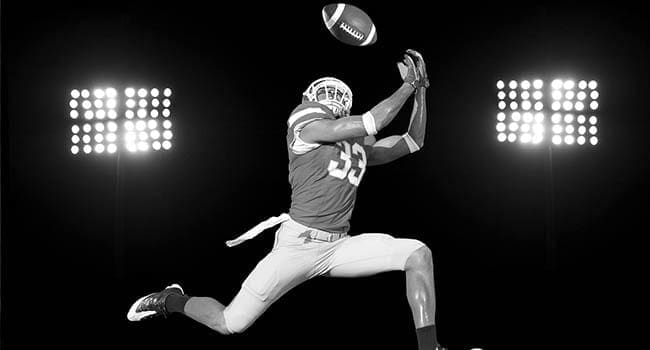 Football fans have spoken: the games last too damn long. Delays, reviews, timeouts and injuries turn 18 minutes of action into three-plus hours.
Football fans have spoken: the games last too damn long. Delays, reviews, timeouts and injuries turn 18 minutes of action into three-plus hours.
At least that’s the results of research done for the new XFL, a football league that starts play on Feb. 8, right after the National Football League’s Super Bowl. The startup league – it follows its predecessor XFL, which folded after one season in 2001 – will feature a number of new rules to (organizers hope) improve the sport, reduce injuries and, yes, speed up the pace of play.
The league that brought you the player He Hate Me in its first go-round announced that, like the Canadian Football League, receivers will only need one foot in bounds for a catch. Teams will have options after a touchdown to score up to nine points by running plays from further out. No point-after kicks. Overtime will be a series of shootout-style possessions that, like hockey, allow both teams a chance to score. Kickoffs will feature the tacklers lining up on the 35-yard line.
Punts into the end zone and out of bounds will be considered touchbacks that go to the 35-yard line.
But the most telling changes gleaned from research by the Vince McMahon operation point to fans wanting a more streamlined game played in under three hours. As a result, the XFL will play a running clock until two minutes are left in the half. No stops after incompletions or out of bounds. The play clock – like in the CFL – will be 25 seconds (it’s 40 in the NFL). Halftime will be 10 minutes long (NFL halftime is 12 minutes).
Each team will have only two timeouts per half, and coaches will not be allowed to challenge officials’ calls. The coin flip will be held 35 minutes before kickoff to speed up pregame. “Our desire to have the ability to have a complete regulation game as well as an overtime in that three-hour window is met by the way our game’s constructed,’’ says XFL commissioner Oliver Luck, father of former NFL quarterback Andrew Luck.
The XFL is attempting to reach a younger, attention-challenged consumer with the promise of a predictable playing time. They want to grant live customers a tight spectacle. And they want to offer a guaranteed time slot for broadcasters to prevent pushing back later games and events.
But it also hints at a problem infecting all pro sports. Look at the acres of empty seats (some already purchased) as games begin in most sports. Some fans arrive late. The rest don’t bother to show. Because of endless games and unwanted game inventory, the day of the sellout is waning. Consecutive sellout streaks are ending across every level of sport. New arena and stadium projects have fewer seats.
The length of games is a major reason.
It’s no secret that the ascendant appeal of soccer and basketball is predicated on their crisp two-hour format. The average length of an National Basketball Association game is two hours and 11 minutes, as of 2018. NFL games stretch to 3:02. As well, the improvement in home entertainment systems makes sitting at home and paying $2 for a beer that costs $15 at the stadium a preferable option.
The greatest sinner in running time is Major League Baseball, with its four-hour-plus marathons for regular-season contests. Baseball is stall ball. Everything is launch angles, lift co-efficient and letting it fly for the fences. Between an allegedly juiced ball and the economics of the game that reward home-run sluggers over doubles hitters, everybody is aiming for the fence. The 2019 season featured remarkable home-run figures.
The antidote has been micro-managing pitching. Your contemporary manager runs out relievers to stop big rallies every inning. That produces more stalling than playing, as relief pitchers trot into the game to face a handful of hitters at most.
So eliminate warmup pitches for a relief pitcher. He’s had a mound to throw off of in the bullpen, that’s enough. Substitute National Hockey League goalies don’t get warmup shots. A second-string quarterback doesn’t get to whip a few passes when he takes over. An NBA replacement doesn’t get to test out the rim. So why drag out these games ever longer with this nonsense?
So far, MLB has made cosmetic changes but more needs to be done to hold the attention of a younger audience that would rather play e-sports on their laptop in the basement.
The running times for hockey and other teams sports – bloated by TV commercial insertions – are not much better. Hockey games have an average of 81 stoppages in a game. While NHL commissioner Gary Bettman keeps saying his sport is perfect just the way it is, a quick scan of the stands shows people are voting with their feet by not showing up to regular-season games.
It remains to be seen whether this version of the XFL lasts longer than its predecessor. But if it does survive, it well may be because good things come in smaller packages.
Troy Media columnist Bruce Dowbiggin career includes successful stints in television, radio and print. A two-time winner of the Gemini Award as Canada’s top television sports broadcaster, he is also the publisher of Not The Public Broadcaster.
The views, opinions and positions expressed by columnists and contributors are the author’s alone. They do not inherently or expressly reflect the views, opinions and/or positions of our publication.

